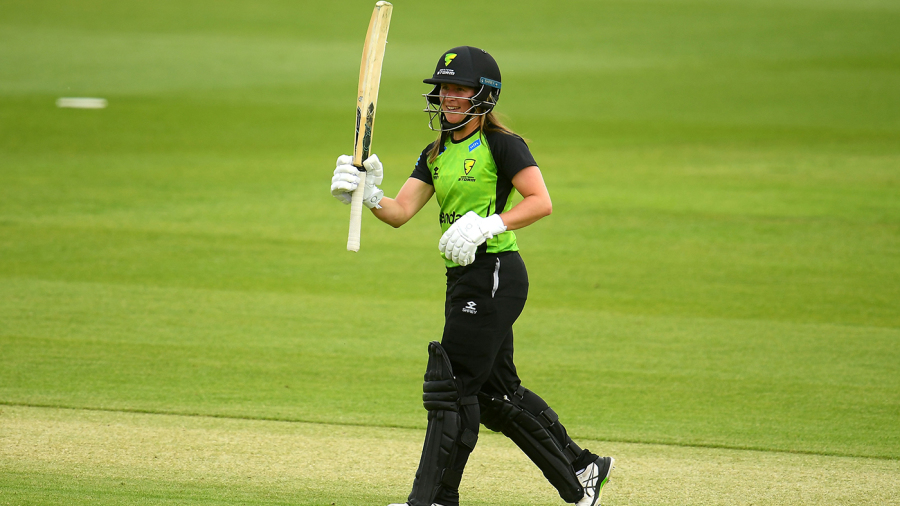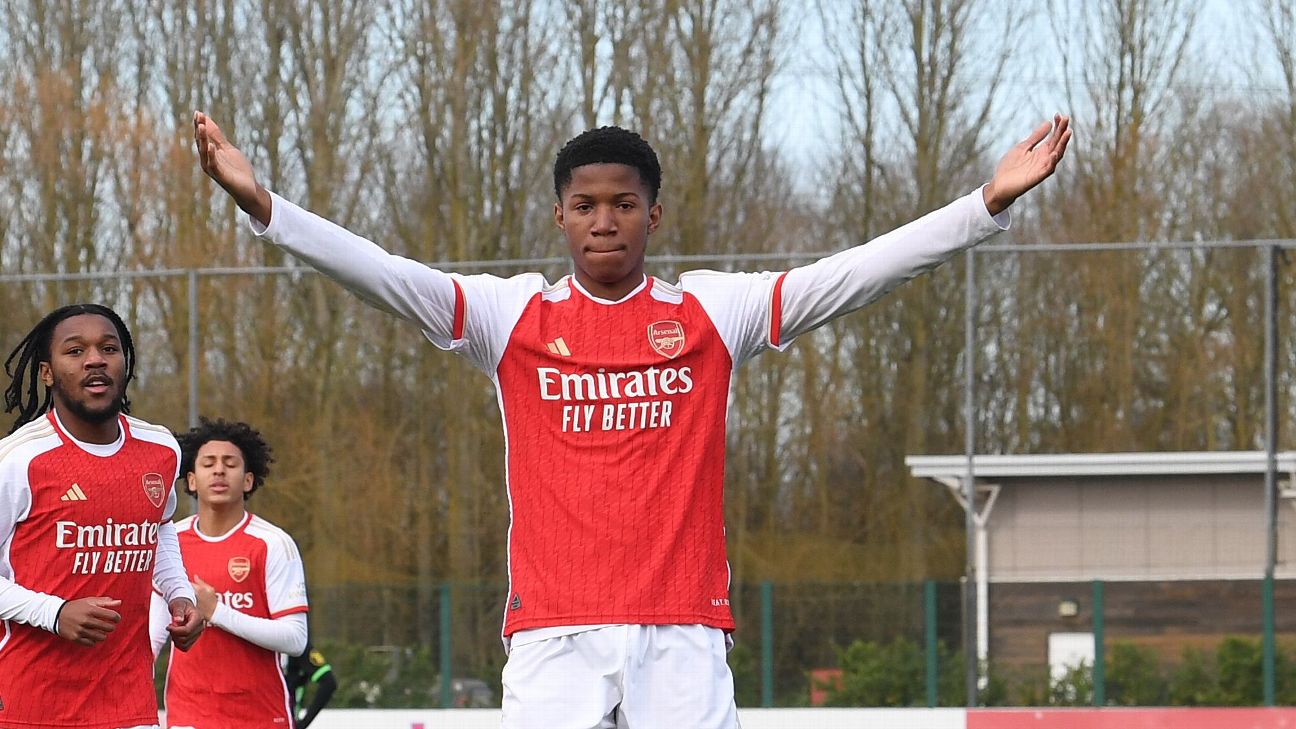![cricket:image:1414089 [900x506]](https://a.espncdn.com/i/cricket/cricinfo/1414089_900x506.jpg)
Arteta reveals Wenger advice amid title run-in
Thursday marks the return of women's red-ball cricket in India's domestic calendar after a gap of six years, with the Senior Women's Inter-Zonal Multi-Day Trophy commencing in Pune. It was added to the calendar only in March, after India won one-off Tests against Australia and England at home last December. And while women cricketers past and present are happy to get what they have, Saba Karim, the former BCCI women's cricket head, feels it's "just the beginning" and there will be more.
"It's a step in the right direction because India has started to play Tests; it makes sense to have a very robust red-ball competition at home," Karim told ESPNcricinfo. "I think this is just the beginning because this year, due to paucity of time, it's conducted at the inter-zonal level. But I am sure that going forward we may see some inter-state red-ball cricket also.
"If we can draw an analogy from men's cricket: India men's domestic is the most robust and competitive among all cricket-playing nations. That's the reason team India now is the superpower at international cricket. That's the kind of lead which women's cricket needs to take. I think that's what BCCI is looking to do at this stage. If you have a strong domestic cricket, that includes the red ball as well, then we will see similar kind of results from women's team also at the international level."
In terms of women's Test cricket, there is the Ashes series, which is a regular fixture, but overall, there have been only 26 women's Tests in the last ten years. And India - one of four teams, the others being Australia, England and South Africa, that do play women's Tests - have played just six in the last ten years, four of them between 2021 and now. Last August, Harmanpreet Kaur had called for the resumption of long-form domestic cricket for women, and more recently, Meg Lanning said it like it is when she said, "It's either more or you sort of don't go there at all".
Former India captain and coach Purnima Rau echoed Karim, saying younger players "wouldn't have known the essence" of the game at all had they played only white-ball cricket.
The inter-zonal tournament had begun in the 2014-15 season as a two-day competition, with the three subsequent seasons played in a three-day format before it was scrapped. This time, the BCCI has made it a six-team tournament, with North East Zone added to North Zone, East Zone, West Zone, South Zone and Central Zone. A total of five matches will be played. Thursday will see East Zone vs North East Zone and West Zone vs Central Zone in action in the two quarter-finals. North Zone and South Zone were placed in the semi-finals directly following a draw of lots. They will meet the winners of the first two games from April 3, with the title match starting April 9.
"It [multi-day games for women at domestic level] started when we came into the [BCCI's] fold in 2006, two-day games for all the states. When we played cricket, our semi-final was for two days, and the final was three days. The kind of experience in planning an innings, batting in the middle for a longer time, the art of bowling, the art of batting, the art of captaincy is always there in the multi-day game," Rau, who represented India between 1993 and 2000 in five Tests and 33 ODIs, pointed out.
"Somewhere down the line, the orthodox game, a game of basics, is going to work here. Girls think T20 and slam-bang cricket is going to help us in this format; it might help them, but after playing a lot of multi-day games, they will decipher on their own whether that kind of game will suit them. To start off with, just leave it to the orthodox way of playing - occupation of the crease, working on your singles and twos. These are the things that are going to help them.
"The Test-match wins [in December] have spurred them [the BCCI] to do something. It's good it's happening for the younger generation."
****
Just over ten days after the completion of the second season of the Women's Premier League on March 17, India stars such as Harmanpreet, Smriti Mandhana, Jemimah Rodrigues and Yastika Bhatia will be in action in the red-ball tournament. As far as preparation goes, teams had to make do with just a few days of practice since this was somewhat squeezed into the calendar.
It might be more about "mindset change", though, especially for players who were involved in the WPL and are not out of touch.
"We haven't gotten much time to practice as such but, what we need is a mindset change," Devika Vaidya, the India allrounder who is representing West Zone and had also played in the 2015-2016 tournament, told ESPNcricinfo. "The main thing about playing the long format is being able to switch on and switch off. You might have to bat for a long time and then immediately come back to bowl. We have to be ready all the time.
"That patience, to build the partnerships or trap the batter, you need skills to do that. All this comes with time when you play more matches and get experience. And then it gets a bit easy to change the mindset. If the Tests happen regularly, then we need to practice bringing in the mindset change as well. Our skills are actually going to be tested. That's the fun part of this format."
Vaidya didn't find a team in this edition of the WPL after playing for UP Warriorz in 2023. In the time off, she changed her fitness routines, her training consisted of certain workouts to gain muscle mass and improve endurance, precisely what a player preparing for multi-day cricket would work on.
"Luckily, I had already made changes in my training," she said. "So I was on the same track, and then they announced [the new tournament]. So for me, it's quite simple to continue what I was already doing. Before any T20 tournament, we tend to do a lot of power training. In cricket, we don't have to run for a long time. But we do need that endurance to play 100 overs in one day.
"When we play a tournament in March, it's going to be hot. When you play for a long time, there are chances that you may lose body mass. We need to sustain in this heat. We train more in the gym, build our muscle mass enough and focus on endurance."
There are many players, prominent now, who haven't had any red-ball experience at the senior level coming into this competition. The likes of S Anusha, Tamil Nadu captain and a part of the South Zone team, falls in this category. With no zonal-level camps organised before the tournament, Anusha turned to Niranjana Nagarajan, the fast bowler who played two Tests in 2014, and current spin-bowling allrounder D Hemalatha, who had also been a part of the zonal red-ball tournament when it was last played.
"I have played with the red ball at the Under-19 level, but ahead of this tournament, I did a lot of spot bowling and worked on being consistent with line and length without trying too many variations, which I would do in short formats," Anusha told ESPNcricinfo. "I spoke to Hemalatha and Niranjana to understand the mindset needed for this format. Niranjana and I have bowled together for the state, and she knows about my bowling style well. She said: 'You need to be patient, and show character.'
"It's easy to lose focus when you play cricket all day long, so she was giving me tips about how to stay focussed and be determined to pick up wickets."
****
It's a start and there could be more, or so one hopes. The benefits are likely to be wide-reaching.
The format of the tournament, though, could do with some thinking and tinkering. Just five games. Five teams, potentially, could end up playing just one match, and two teams, possibly, will get to play three. Is that fair? And are the players from the north-east ready for cricket at this level?
"The competition should be a regular feature, not just with zones, but with also [played among] the state teams. Especially the north-east players, who are yet to find their feet," Rau argued. "I think the north-east players need to play more number of longer duration matches. We have to unearth talent there. I feel state teams should start playing [multi-day cricket], and there should be another group for north-east and not mix them with the big players."
Maybe things will get better with time.













